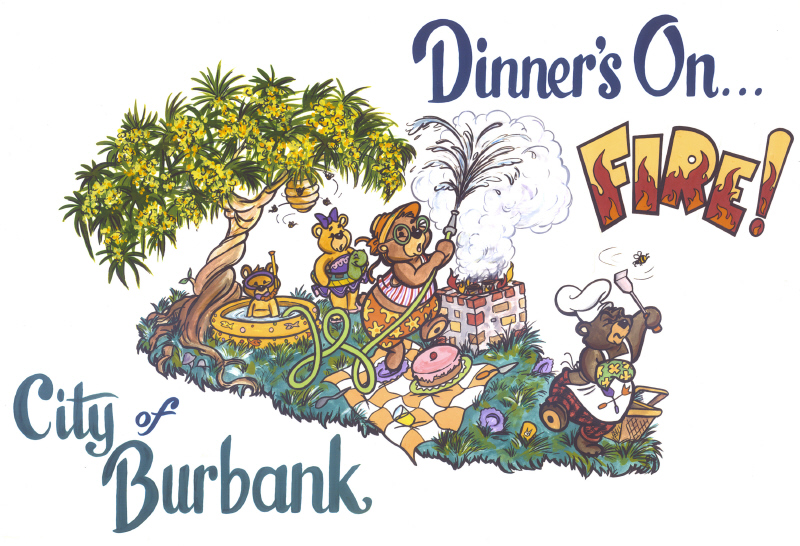Construction
Work soon began on transforming a motorized chassis into a picnic gone awry. The basic workings of the float are re-used each year, with a new framework attached. This involves a great deal of metal work - cutting, welding, bending and more. Most of this was done in the heat of a Burbank summer, well in advance of the parade.
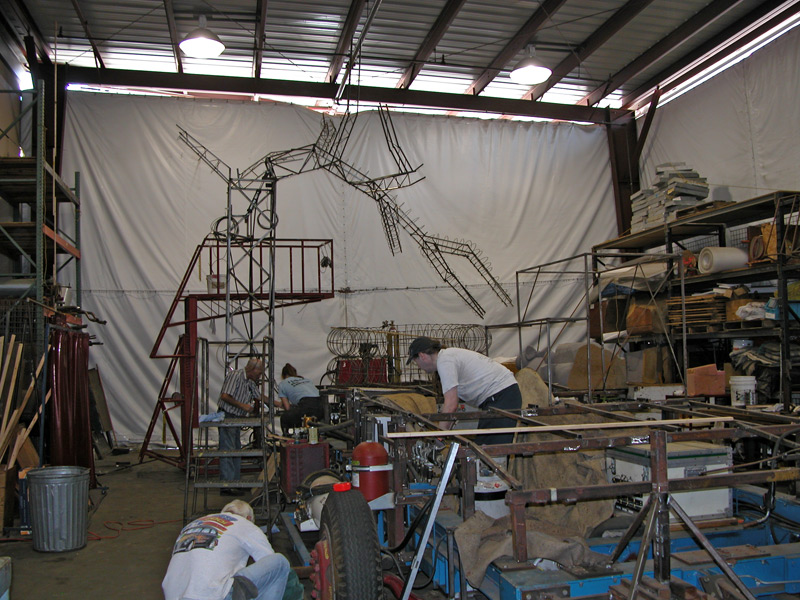
Here's how the float looked on August 7, 2004. The main part of the framework has been attached to the permanent chassis, which is the blue framework in the picture. The chassis gets reused year after year, but be can be reconfigured to move some of the basic components around. All designs have to allow for the height of the engines (thee are two, one for propulsion, the other for animation) and room for the driver, a safety observer, and any other crew that is needed to operate the float.
A steel framework is added to the chassis and will be covered later in foam to give it the final shape, and a spot to put the flowers. The beginnings of the tree, wading pool and barbecue can also be seen. There's a tremendous amount of metal, and sometimes wood, inside the floats to both shape them and to carry the weight of the flowers and any performers.
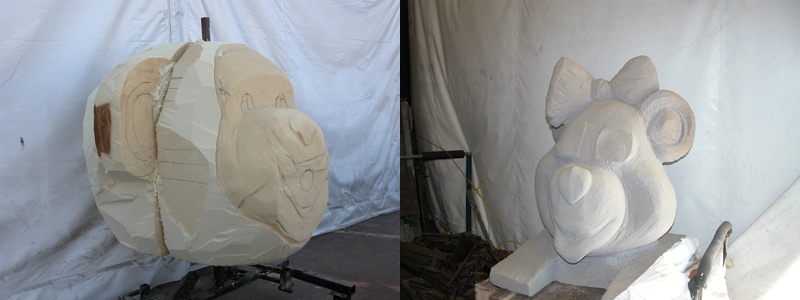
The bear heads were carved from blocks of foam so the facial details could be clearly shown. This part of the float is too critical an area to try to do it via shaping wire and covering it in foam as is done for larger elements such as the bear bodies. Papa Bear was so big that his head was formed by gluing smaller blocks together. These pictures were taken on August 28.
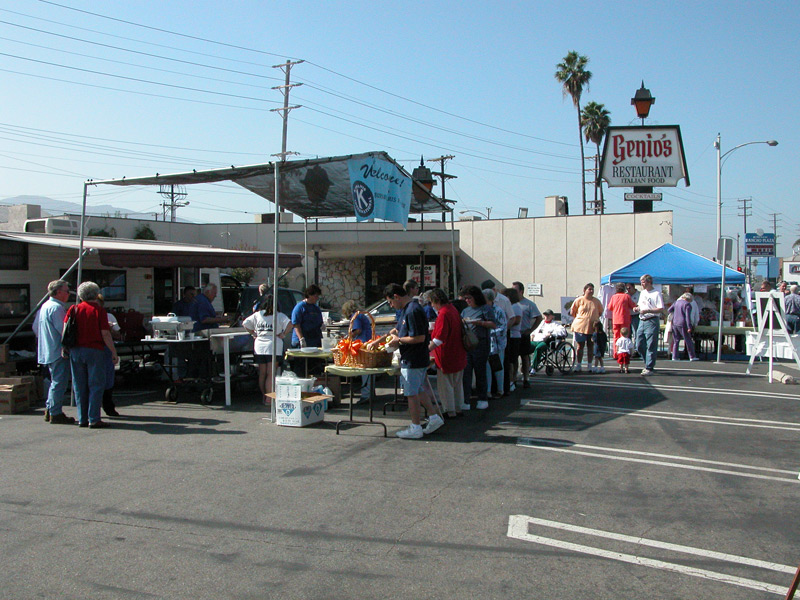
While construction was underway, all sorts of other work continued. There were many people cutting and drying flowers, harvesting some from local gardens. This was a Pancake Breakfast held on October 2 as a fund-raiser. Many community members came out to show support for the float and to learn more about the whole process.
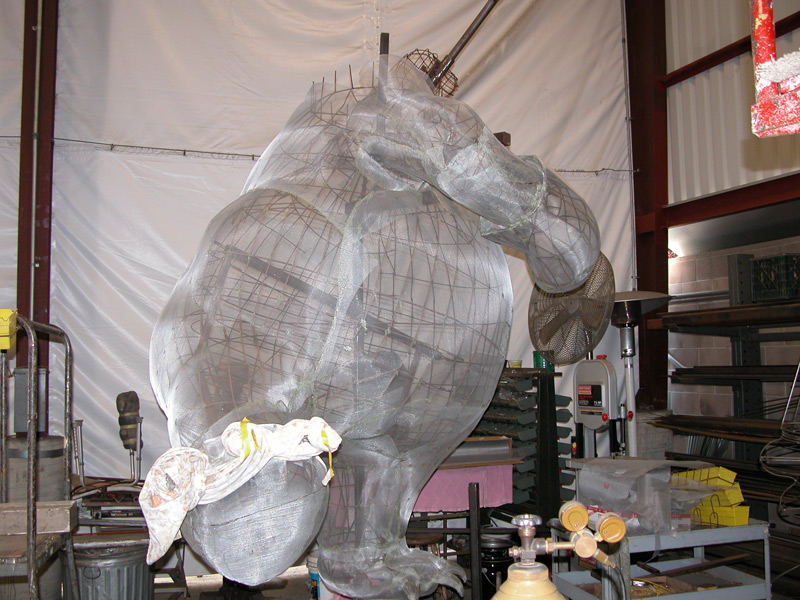
The bear family bodies and other sections such as the wading pool were formed by wire mesh over a metal frame. Here's Papa on October 30. The bears were designed so they could be built and decorated while on metal floor stands and not on the float itself. That allows workers to get to both sections without getting in each other's way. All of this mess work is then covered by a spray-on foam which gives a surface for the flowers. It also allows for vials of water that hold the roses to stay in place, passing through the foam and wire mesh.
Work continued throughout the year, and as the parade date drew near the float really began to take shape. Then, almost before we knew it, it was "Deco Week", those very busy and often insane days leading up to the parade.
